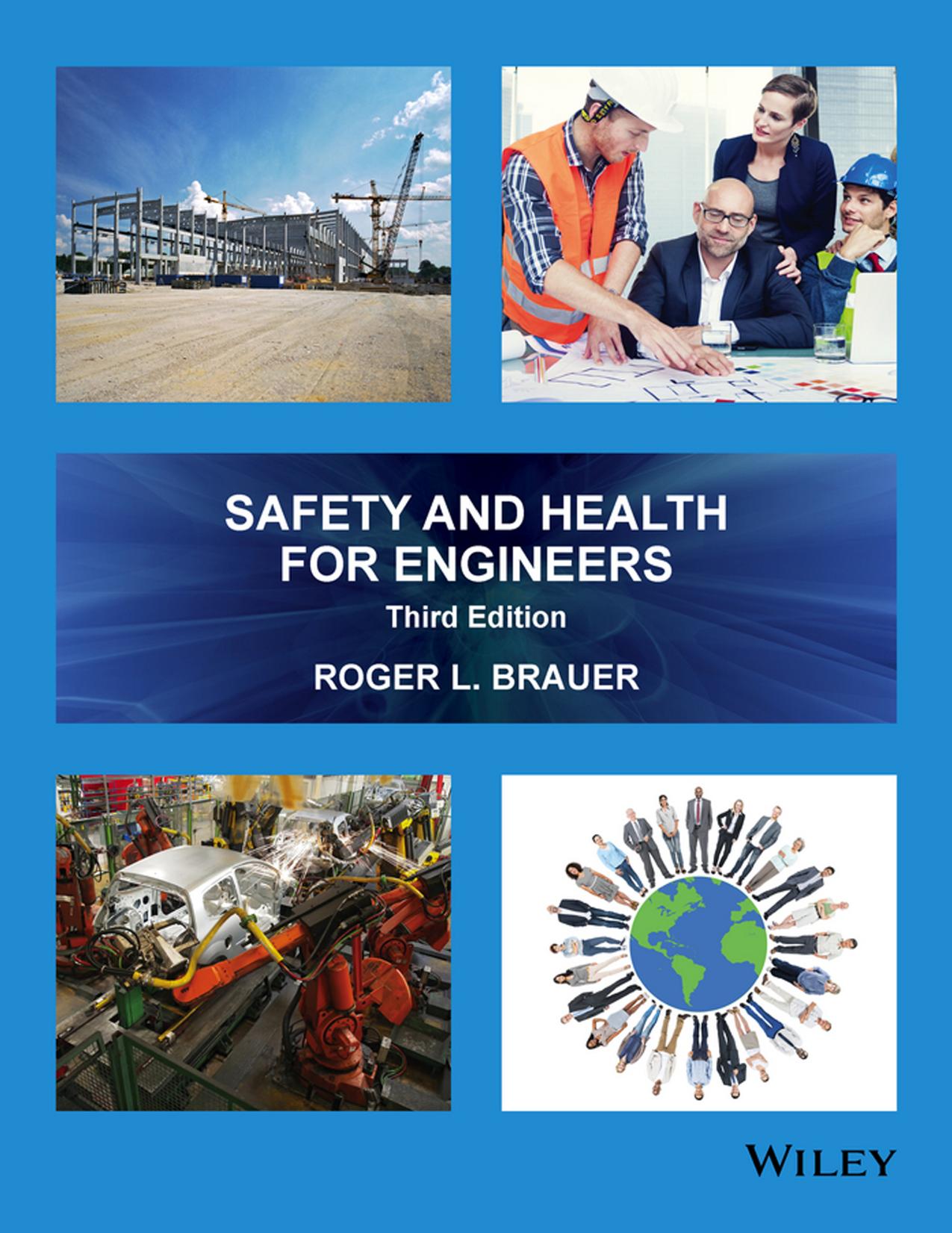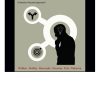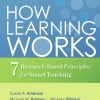Safety and Health for Engineers 3rd Edition by Roger Brauer ISBN 1119219183 9781119219187
$70.00 Original price was: $70.00.$35.00Current price is: $35.00.
Instant download Safety and Health for Engineers 3rd by Roger L. Brauer Roger L. Brauer after payment
Safety and Health for Engineers 3rd Edition by Roger Brauer – Ebook PDF Instant Download/Delivery: 1119219183 9781119219187
Full download Safety and Health for Engineers 3rd Edition after payment

Product details:
ISBN 10: 1119219183
ISBN 13: 9781119219187
Author: Roger Brauer
Safety and Health for Engineers, 3rd Edition, addresses the fundamentals of safety, legal aspects, hazard recognition and control, and techniques for managing safety decisions, as well as:
- Completely revises and updates all 38 chapters in the book
- New edition adds more than 110 stories and cases from practice to illustrate various topics or issues
- New topics on adapting to new safety concerns that arise from technology innovations; convergence of safety, health and environmental departments in many organizations; the concept of prevention through design; and emphasis on safety management systems and risk management and analysis
- Includes learning exercises and computational examples based on real world situations along with in-depth references for each chapter
- Includes a detailed solutions manual for academic adopters
- Covers the primary topics included in certification exams for professional safety, such as CSP/ASP
Safety and Health for Engineers 3rd Table of contents:
Part I: Introduction
Chapter 1: The Importance of Safety and Health
1-1 Introduction
1-2 Why Safety?
1-3 The Records
1-4 Impact of Changes
1-5 Designing to Achieve Safety
Exercises
Review Questions
Notes
References
Chapter 2: Safety and Health Professions
2-1 Introduction
2-2 Safety Professionals and Practitioners
2-3 Engineering
2-4 Health Sciences
2-5 Management Sciences
2-6 Behavioral Sciences and Education
2-7 The Legal Profession
2-8 Other Professions
2-9 Education for Safety Professionals
2-10 Licensing and Certification for Safety Practitioners
Exercises
Review Questions
Notes
References
Chapter 3: Fundamental Concepts and Terms
3-1 Some Basic Terms
3-2 Accidents and Incidents
3-3 Consequences
3-4 Costs
3-5 Accident Causes: Unsafe Acts, Conditions and Circumstances
3-6 Accident and Incident Theories
3-7 Preventive Strategies
3-8 How Safe Is Safe Enough?
Exercises
Review Questions
Notes
References
Part II: Legal Aspects of Safety
Chapter 4: Federal Laws, Regulations, Standards, and Agencies
4-1 Introduction
4-2 Federal Laws and Regulations
4-3 Federal Agencies
4-4 Legislative Branch
4-5 Judicial Branch
4-6 Executive Branch
4-7 Independent Agencies
4-8 Other Departments, Agencies, and Safety Programs
Exercises
Review Questions
Notes
Reference
Chapter 5: Other Safety Laws and Regulations
5-1 Introduction
5-2 State Governments
5-3 Private Companies
5-4 Voluntary and Consensus Standards
5-5 Private Laboratories
5-6 Foreign and International Laws and Regulations
Exercises
Review Questions
Notes
References
Chapter 6: Workers’ Compensation
6-1 The Demand for Work Injury Compensation
6-2 Workers’ Compensation Laws
6-3 Workers Covered
6-4 Eligibility and Benefits
6-5 Financing Workers’ Compensation
6-6 Administrative Procedures
6-7 Third Party Lawsuits
6-8 Workers’ Compensation Organizations
6-9 Workers’ Compensation and Insurance Fraud
Exercises
Review Questions
Notes
References
Chapter 7: Products Liability
7-1 Introduction
7-2 Theories of Liability
7-3 Products Liability Evidence
7-4 Negligence
7-5 Warranty
7-6 Strict Liability
7-7 Defects
7-8 Misuse and Foreseeability
7-9 Modifications and Substantial Change
7-10 Statute of Limitations and Statute of Repose
7-11 The Lawsuit Process
7-12 Expert Witness
7-13 Legal Strategies
7-14 International Products Liability Laws
7-15 Reducing Liability Risks
Exercises
Review Questions
Notes
References
Chapter 8: Record Keeping and Reporting
8-1 Why Keep Records and File Reports?
8-2 Kinds of Records and Reports
8-3 The OSHA Method of Injury and Illness Record Keeping
8-4 Other Record-Keeping Standards and Records
Exercises
Review Questions
Notes
References
Part III: Hazards and Their Control
Chapter 9: General Principles of Hazard Control
9-1 Introduction
9-2 Hazards and Hazard Control Defined
9-3 Sources of Hazards
9-4 Principles of Hazard Control
9-5 Environmental Hazards
9-6 Hazard Control Models
9-7 Some Basics
Exercises
Review Questions
Notes
References
Chapter 10: Mechanics and Structures
10-1 Introduction
10-2 Elements of Mechanics
10-3 Modes of Structural Failure
10-4 Causes of Structural Failure
10-5 Earthquakes
10-6 Controlling Structural Hazards
10-7 Applications
Exercises
Review Questions
Notes
References
Chapter 11: Walking and Working Surfaces
11-1 Introduction
11-2 Tripping and Slipping
11-3 Falls
11-4 Preventing Falls and Injuries
11-5 Applications
Exercises
Review Questions
Notes
References
Chapter 12: Electrical Safety
12-1 Fundamentals of Electricity
12-2 Electrical Hazards
12-3 Control of Electrical Hazards
12-4 Power Generation and Distribution
12-5 Static Electricity
12-6 Hospital Patients
12-7 Lightning
12-8 Battery Charging, Shipping, and Storage
Exercises
Review Questions
Notes
References
Chapter 13: Tools and Machines
13-1 Tool and Machine Hazards
13-2 Safeguarding Machines
13-3 Power Transmission Safeguards
13-4 Point-of-Operation Safeguards
13-5 Controls For Hand Tool Hazards
13-6 Portable Power Tool Controls
13-7 Standards, Regulations, and Guides
Exercises
Review Questions
Notes
References
Chapter 14: Transportation
14-1 Transportation Accidents
14-2 Controlling Transportation Hazards
14-3 Accident Reconstruction
14-4 Other Forms of Transportation
14-5 Transportation of Hazardous Materials
Exercises
Review Questions
Notes
References
Chapter 15: Materials Handling
15-1 Introduction
15-2 Manual Materials Handling
15-3 Jacks
15-4 Hand-Operated Materials Handling Vehicles
15-5 Powered Vehicles
15-6 Hoisting Apparatus
15-7 Ropes, Chains, and Slings
15-8 Conveyors
15-9 Elevators, Escalators and Manlifts
15-10 Bulk Materials, Excavation and Trenching
15-11 Storage of Materials
Exercises
Review Questions
Notes
References
Chapter 16: Fire Protection and Prevention
16-1 Introduction
16-2 The Physics and the Chemistry of Fire
16-3 Behavior of Fire
16-4 Fire Hazards of Materials
16-5 Fire Safety in Buildings
16-6 Industrial and Process Fire Hazards
16-7 Life Safety
16-8 Fire Detection and Alarm Systems
16-9 Fire Extinguishment
16-10 Fire Departments
Exercises
Review Questions
Notes
References
Chapter 17: Explosions and Explosives
17-1 Explosions
17-2 Explosion Hazards
17-3 Dust Explosions
17-4 Controls for Explosions
17-5 Explosives
Exercises
Review Questions
Notes
References
Chapter 18: Heat and Cold
18-1 Introduction
18-2 Heat Transfer
18-3 Thermal Measurement
18-4 Heat
18-5 Burns
18-6 Cold
Exercises
Review Questions
Notes
References
Chapter 19: Pressure
19-1 Introduction
19-2 Low Pressure Environments
19-3 Negative Pressure Injuries
19-4 High Pressure Environments
19-5 Pressurized Containers
19-6 High Pressure Fluids
Exercises
Review Questions
Notes
References
Chapter 20: Visual Environment
20-1 Illumination
20-2 Color
20-3 Signs
Exercises
Review Questions
Notes
References
Chapter 21: Non-Ionizing Radiation
21-1 The Electromagnetic Spectrum
21-2 Microwaves
21-3 Ultraviolet Radiation
21-4 Infrared Radiation
21-5 High Intensity Visible Light
21-6 Lasers
21-7 Other Non-Ionizing Radiation
Exercises
Review Questions
Notes
References
Chapter 22: Ionizing Radiation
22-1 Introduction
22-2 Physics of Radiation
22-3 Hazards
22-4 Exposure Standards
22-5 Controls
22-6 Measurement
22-7 Radon
22-8 Irradiated Food
Exercises
Review Questions
Notes
References
Chapter 23: Noise and Vibration
23-1 Sound and Noise
23-2 Physics
23-3 Hearing
23-4 Hazards of Noise
23-5 Standards
23-6 Controls
23-7 Measurement
23-8 Vibration
Exercises
Review Questions
Notes
References
Chapter 24: Chemicals
24-1 Chemical Regulations and Standards
24-2 Hazards
24-3 Toxicology
24-4 Sources of Toxicological Data
24-5 Controls
24-6 Measurement
24-7 Nanotechnology
24-8 Confined Spaces
24-9 Process Safety
Exercises
Review Questions
Notes
References
Chapter 25: Ventilation
25-1 Types of Ventilation
25-2 Principles of Ventilation
25-3 Capturing Particulates and Gases
25-4 Flow in Pipes and Ducts
25-5 Fans
25-6 Air Cleaning Devices
25-7 Ventilation Measurement
25-8 Standards
Exercises
Review Questions
Notes
References
Chapter 26: Biohazards
26-1 Introduction
26-2 Agents and Sources
26-3 Hazards
26-4 General Controls
26-5 Sick Building Syndrome and Indoor Air Quality
26-6 Genetic Engineering
26-7 Other Biohazards and Controls
Exercises
Review Questions
Notes
References
Chapter 27: Hazardous Waste
27-1 Introduction
27-2 Hazardous Waste
27-3 Controls for Hazardous Materials
27-4 Laws and Regulations
Exercises
Review Questions
Notes
References
Chapter 28: Personal Protective Equipment
28-1 General Principles
28-2 Head Protection
28-3 Eye and Face Protection
28-4 Hearing Protection
28-5 Respiratory Protection
28-6 Hand, Finger, and Arm Protection
28-7 Foot and Leg Protection
28-8 Body Protection
28-9 Fall Protection
28-10 Electrical Worker Protection
28-11 Emergency Showers and Eye Wash Fountains
Exercises
Review Questions
Notes
References
Chapter 29: Emergencies and Security
29-1 Introduction
29-2 Types of Emergencies
29-3 Priorities in Emergencies
29-4 Preventing Losses From Emergencies
29-5 Resources
29-6 Security
29-7 A Disaster Dilemma
Exercises
Review Questions
Notes
References
Chapter 30: Facility Planning and Design
30-1 Facility Development Process and Safety
30-2 Tools to Help Safety in Design
30-3 Site Considerations
30-4 Buildings and Facilities
30-5 Work Station Considerations
30-6 Equipment and Process Considerations
Exercises
Review Questions
Notes
References
Part IV: The Human Element
Chapter 31: Human Behavior and Performance in Safety
31-1 Human Behavior
31-2 Human Behavior and Safety
31-3 Designing for Human Behavior
31-4 Safety and Common Sense
31-5 Technological Illiteracy
31-6 Job Stress and Other Stresses
31-7 Management Processes
31-8 Behavior-Based Safety
Exercises
Review Questions
Notes
References
Chapter 32: Procedures, Rules, and Training
32-1 Policies and Procedures
32-2 Warnings and Instructions
32-3 Training
32-4 Promoting Safety
Exercises
Review Questions
Notes
References
Chapter 33: Ergonomics
33-1 Introduction
33-2 Anthropometry
33-3 Information and Displays
33-4 Controls and Motor Activity
33-5 Work Physiology
33-6 Biomechanics
33-7 Workplace and Equipment Design
33-8 Designing for the Work Force
33-9 Standards
Exercises
Review Questions
Notes
References
Part V: Managing Safety and Health
Chapter 34: Risk, Risk Assessment and Risk Management
34-1 Risk and Losses
34-2 Risk Complexities
34-3 Risk Assessment
34-4 Risk Management
34-5 Examples of Risk-Based Methods
Exercises
Review Questions
Notes
References
Chapter 35: Safety Management
35-1 Introduction
35-2 Elements of Management
35-3 Positioning Safety In An Organization
35-4 Achieving Safety In An Organization
35-5 Safety and Cost
35-6 Safety Management Systems
Exercises
Review Questions
Notes
References
Chapter 36: System Safety
36-1 Introduction
36-2 General Procedures
36-3 Preliminary Hazard Analysis (PHA)
36-4 Fault Tree Analysis
36-5 Failure Mode and Effects Analysis (FMEA)
36-6 Root Cause Analysis (RCA)
36-7 Hazard Totem Pole
36-8 Management Oversight and Risk Tree (MORT)
36-9 Other Analyses and Applications of System Safety
Exercises
Review Questions
Notes
References
Chapter 37: Safety Analyses and Management Information
37-1 Role of Analysis
37-2 Inspections
37-3 Safety Audits
37-4 Accident Investigation
37-5 Safety Performance
37-6 Presenting Results of Analyses
37-7 Computer Systems, the Internet and Safety
Exercises
Review Questions
Notes
References
Chapter 38: Safety Plans and Programs
38-1 Introduction
38-2 Product Safety Program
38-3 Occupational Safety and Health Programs
38-4 Ergonomics Program
38-5 Emergency Response Plan
38-6 Construction Accident Prevention Plan
People also search for Safety and Health for Engineers 3rd:
safety and health for engineers 3rd
brauer roger safety and health for engineers 3rd edition
safety and health for engineers 3rd edition
what is health and safety engineer
what does health and safety engineer do


